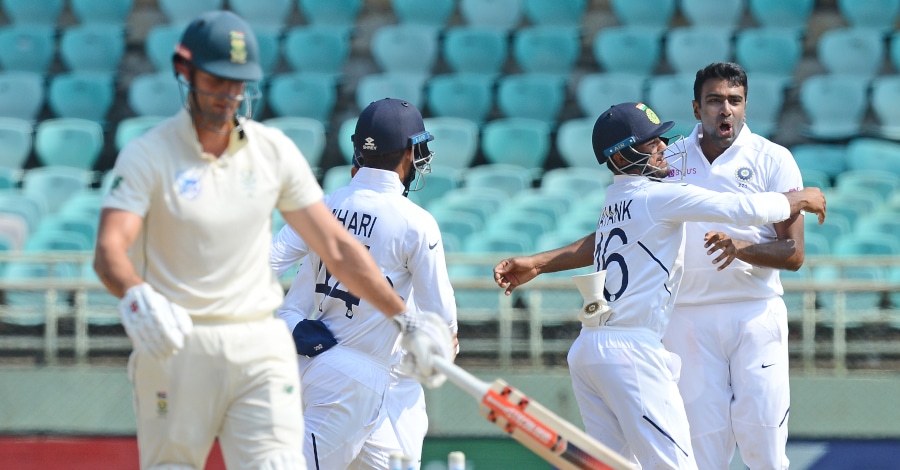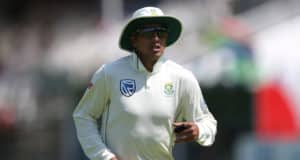South African pitches greatly assist the Proteas’ when they play at home, but cripples them when they play elsewhere in the world, writes JOHN GOLIATH.
India have won 11 consecutive series’ at home. It’s a remarkable feat, but not surprising, as they are a potent team in their own conditions.
But these days they aren’t just a one-dimensional team who prepare dust bowls and try and bowl you out with three or four spinners. They have become a team who can play well in most conditions, like they showed this past weekend in Pune when they clinched the Test series against the Proteas with game to spare.
ALSO READ: Faf: A lot of questions need answers
India produced a couple of shocking pitches in 2015 when they beat the Proteas in their previous battle on the sub-continent. But this time around they beat the South Africans on wickets that didn’t look like it needed a priest to cast out the demons.
In fact, they were very good wickets, especially the strip in Pune, which provided help for the seamers, some turn for the spinners and was good enough to play through the line as a batsman. But yet the Proteas were convincingly hammered in both Tests.
Before this series, the Proteas won five of their last seven Test series under former West Indian fast bowler Ottis Gibson. Six of those matches were at home, while one was played in Sri Lanka.
South Africa beat Bangladesh, Zimbabwe, India and Pakistan at home, but lost the series’ against Sri Lanka home and away.
In the home series’ the Proteas played on a couple of spicy pitches, some were even borderline unsafe to bat on, which helped them dispose of Bangladesh, Zimbabwe, India and Pakistan. The batsmen struggled in these Tests, but the bowlers bailed them out with hostile bowling on the strips, which were, at times, frightfully uneven and dangerous.
But the Proteas were hammered in Sri Lanka, as they failed to come to grips with the slow and low pitches, and also struggled to contain their hosts with the ball.
ALSO READ: Proteas name Maharaj replacement
When the teams met in South Africa, the pitches were expected to be as green as the outfield itself, but they ended up being surprisingly decent for a good contest between bat and ball, and Sri Lanka ended up shocking their hosts with a 2-0 series win.
It’s the home team’s prerogative to prepare pitches that suit their game, but the pitches papered over the Proteas’ cracks. The defeat against Sri Lanka highlighted the fact that the Proteas’ lack of skills to perform on competitive wickets.
Kagiso Rabada, one of the best fast bowlers in the world, but hardly looks like a threat in India. Vernon Philander’s current role seems to be more of a containing one instead of a wicket-taking option. Anrich Nortje bowled himself into the ground trying to bounce out India in the second Test on a pitch where he had to dig it in really short to be effective.
The spinners have struggled for consistency. They haven’t been able to adapt to a pitches that offer less bounce than in South Africa, while their speed through the air and lengths they needed to bowl haven’t quite been in sync.
South Africa’s batsmen also lack confidence, because they haven’t had a decent pitch to bat on at home for the last couple of years. They are horribly out of form and don’t know how to compile an innings and transfer the pressure on the opposition’s bowlers at this level.
The Proteas team of the late 2000s and early to mid 2010s adapted beautifully to difference conditions. In 27 Test series between 15 December 2006 and 28 July 2014, South Africa lost just two series – twice at home to Australia. They recorded series wins in India, Pakistan, Sri Lanka, Bangladesh, England and Australia.
Admittedly, they were a was once-in-a-generation team, with some of the best batsmen and bowlers to have ever graced a cricket field.
It was always going to be hard for the Proteas to replace a Greame Smith, Hashim Amla, Jacques Kallis, AB de Villiers or a Dale Steyn. These are legends of the game, but this current Proteas team look really ordinary in terms of their skills and execution with both bat and ball.
The Proteas have to find a way to get wickets and score runs on ‘good’ wickets. Their skills need to drastically improve, while the batsmen need to find a way to compile proper Test knocks.
The wickets prepared for matches in South Africa need to be better, so that the bowlers can learn to work for their wickets, while allowing the batsman to fight hard initially, before cashing in later.





